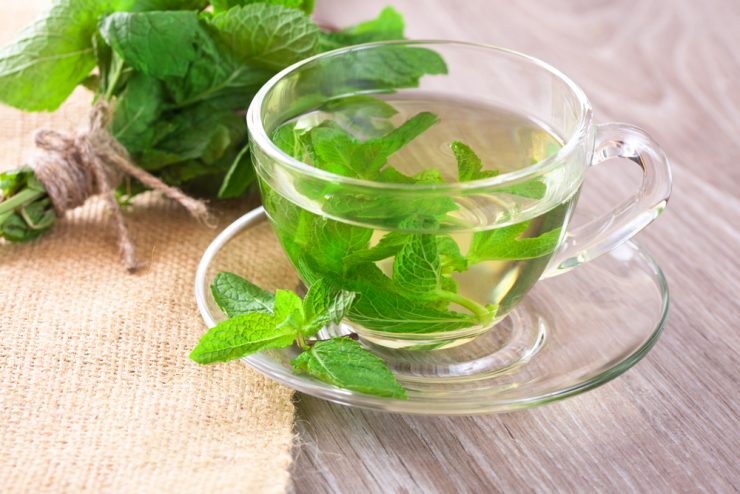Discover everything you need to know about mint.
There are thought to be around 30 species of mint, but the one usually used in herbal medicine is peppermint (Mentha piperita). It is a cross between water mint and spearmint and has square purplish or crimson stems. Its aromatic leaves are oval shaped with pointed tips and it bears crimson whorls of flowers in late summer. The leaves are harvested while the plant is flowering and they are at their most aromatic.
Origins
The refreshing flavour and medicinal qualities of mint, and the organic compound menthol that is found in it, have been valued for thousands of years. Traces of it were found in an Egyptian tomb dating from between 1035 and 332 BC. Records show that it was also popular with the Greeks and Romans.
Over the years, mint has been used as an aromatic. People rubbed it on their dining tables, spread it on the floor, burned it for incense, added it to their baths and served it in tea.
How does it work?
Mint is rich in the medicinally active essential oils menthol and menthone. As well as giving peppermint its distinctive aroma and taste, these volatile oils have therapeutic properties.
What are its benefits?
Among other things, peppermint helps to ease flatulence, bloating and indigestion, encourage sweating and clear catarrh. It is popular as an inhalation for respiratory problems such as coughing, nasal congestion and other symptoms of the common cold, which may explain why menthol is found in many over-the-counter cold and cough remedies. It also has antiseptic and mildly anaesthetic properties and the oil is often used in stimulating rubs to soothe rheumatism.
As menthol has powerful anti-bacterial properties, when applied to the skin in a diluted form, it may help to prevent, as well as heal, spots, boils and acne. It can also be applied to help relieve irritation and insect bites. There is also evidence that inhaling peppermint oil can help concentration. Taking peppermint in capsule form may help to relieve symptoms of irritable bowel syndrome such as pain and bloating.
How do I use it?
Go for fresh rather than dried mint leaves, as they have a better flavour as well as more nutrients. Wrapped in a wet paper towel and stored in a container, mint leaves will last for a few days in the fridge.
For bloating and digestive problems
Pour 150ml of boiling water over a handful of leaves. Leave to infuse for 10-15 minutes, then strain. Drink a cupful of the liquid before meals.
For colds and oral infections
Simply put a handful of leaves into a bowl of boiling water and inhale the steam, or allow the liquid to cool and use it as a mouthwash.
For skin disorders
Use essential oil. Add three drops to 10ml of a carrier oil and apply to the affected area.
For headaches
One to two drops of the essential oil applied to your forehead can help to relieve headaches or migraines, but mind you don’t get it in your eyes.
Watchpoints
- Mint should not be given to babies or toddlers in any form.
- Avoid peppermint oil in pregnancy.
- Never take the essential oil internally without first consulting a herbal or medical practitioner.
Try this:
Grow your own mint in a pot on a sunny windowsill so you can enjoy its benefits all year round. Include some leaves in fruit salads or tomato-based soups for added flavour, or simply crush some leaves between your fingers and enjoy the uplifting aroma.
























Add comment